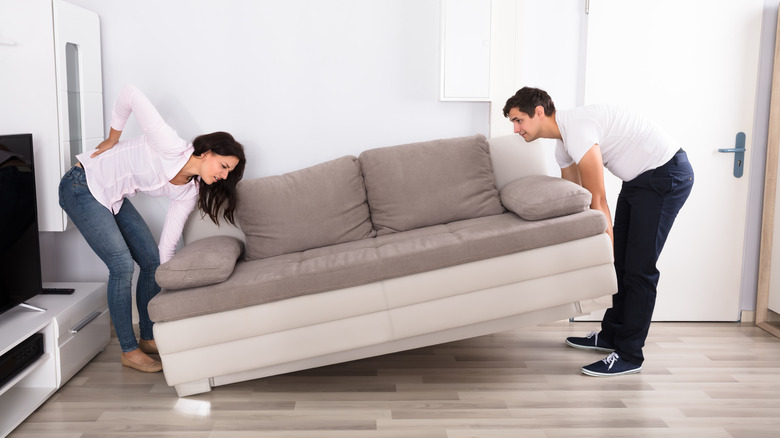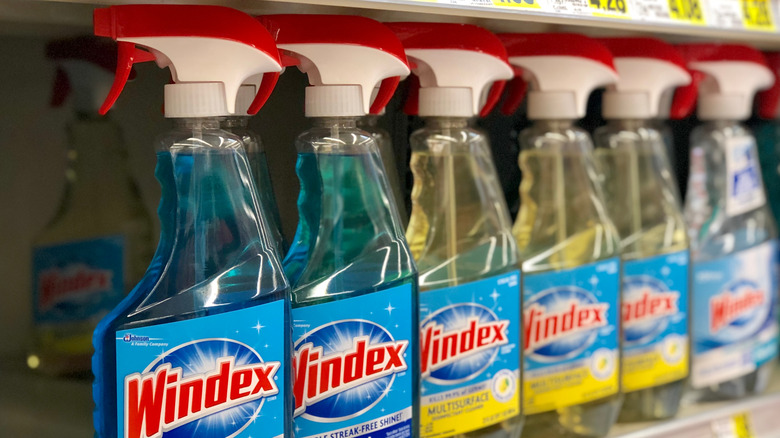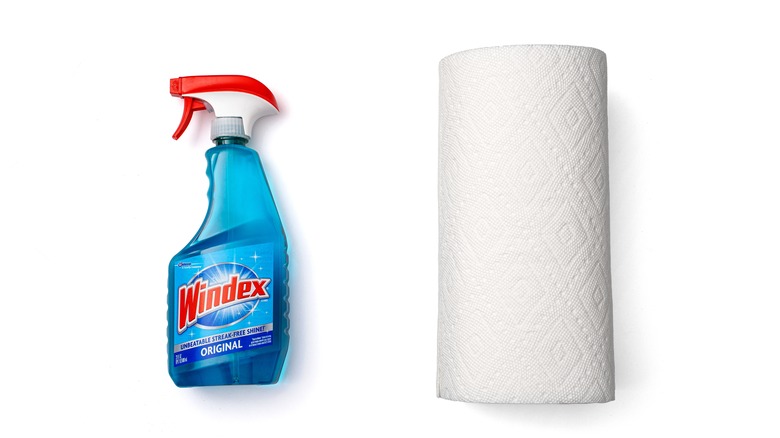Windex Might Be The Secret To Moving Heavy Furniture
If you're planning on moving a heavy piece of furniture this week, you might be preparing yourself for the muscle power that's going to be required to get it to budge. Things like fridges and heavy couches or sideboards usually require two or more people to move, but there is a common household item that might help you make the process much easier — Windex can help these items slide seamlessly across the floor.
That's right: If you have the handy cleaning and polishing agent underneath your sink, you can now use it for something else other than your mirrors and windows. Say you need to move your washing machine or bed. Rather than struggling to budge it yourself and working up a serious sweat, you can lubricate its path with the cleaning spray. This will also alleviate any worry about scratching your hardwood floors or chipping your tiles. Here's how to do it.
How to do it
We know it sounds like magic, but it's not. All you need to do is grab your Windex bottle and spray the floor in front of the furniture or appliance legs. For best results, make sure to do it in front of each leg instead of just the first two. This will lubricate the floor evenly, helping it glide out. If it doesn't immediately move out like butter, you might need to add more liquid, so don't be stingy with the amount. This is especially true if it's an incredibly heavy piece, such as a fridge.
You might also need to gently rock the heavy piece from side to side to unstick it from its spot, especially if it has been left in place for a few years. But after that, it should move without much effort. And because it's now lubricated, there's less friction between the legs and the floor, minimizing the threat of scratches.
Some caveats to keep in mind
While this is a clever way to use Windex around your house, there are some caveats to keep in mind. First, it's better to use the clear formula — rather than the blue — to avoid accidentally staining your floor. Second, you should always spot-test this in an inconspicuous area on your floor before you start spraying it on your boards or tiles. This gives you a chance to see how the liquid will react with your flooring. If you don't notice any discoloration or staining, it's safe to proceed.
If you have hardwood floors, it's safest to use the ammonia-free Windex solution — the ammonia can harm your floors by causing discolored stains. The same is true for any marble or natural stone tiles. In addition, while this tip helps minimize scuffing, it doesn't guarantee there won't be any. Because of this, you should still be careful when moving heavy items, taking care not to scratch your panels or tiles.


